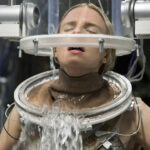Dance, a universal language expressed through movement, has been an integral part of human culture for millennia. Evidence suggests its presence in early communities and civilizations dating back 30,000 years. Over time, dance forms have evolved, branched out, and blended, resulting in the rich tapestry of dance genres we recognize today. From the structured elegance of ballet to the vibrant energy of hip-hop, the world of dance offers a diverse range of styles to explore and appreciate.
Here’s an overview of some of the most popular Types Of Dancing:
- Ballet
- Ballroom
- Contemporary
- Hip Hop
- Jazz
- Tap Dance
- Folk Dance
- Irish Dance
- Modern Dance
- Swing Dance
Top Dance Genres Explained
Ballet
Ballet, a dance form steeped in history and grace, originated during the Italian Renaissance. It flourished in France and Russia, evolving into a performance dance intended for public spectacle. Ballet is characterized by its codified movements, elegant lines, and ethereal quality, typically choreographed to classical music and presented in the form of a ballet.
Ballet productions showcase a wide spectrum of aesthetics, ranging from elaborate costumes and intricate staging to minimalist designs with bare stages. This versatility allows ballet to tell diverse stories and evoke a range of emotions.
Today, ballet is a globally recognized and highly technical dance form, encompassing numerous subgenres. These include classical ballet, known for its traditional techniques and storytelling; romantic ballet, emphasizing emotion and fluidity; neoclassical ballet, a bridge between classical and modern styles; and contemporary ballet, which incorporates modern dance elements for a more expressive approach.
Ballet education is rigorous and structured, with six core recognized methods shaping training worldwide: the Cecchetti method, the Bournoville method, the Vaganova method, the French School, the Royal Academy of Dance method, and the Balanchine method. Aspiring ballet dancers dedicate years to mastering these techniques at prestigious dance schools around the globe.
For ballet studios and performance spaces, the right flooring is crucial. Harlequin Floors specializes in ballet dance floors engineered to provide the perfect balance of traction and slip resistance. This helps prevent injuries while enabling the fluid, graceful movements essential to ballet. Harlequin Cascade is a favored choice for ballet, often paired with sprung floors to enhance dancer safety and comfort. Harlequin Floors also provides professional-grade ballet barres, available in wall mounted, floor mounted, and freestanding options to meet the needs of any studio or home practice space.
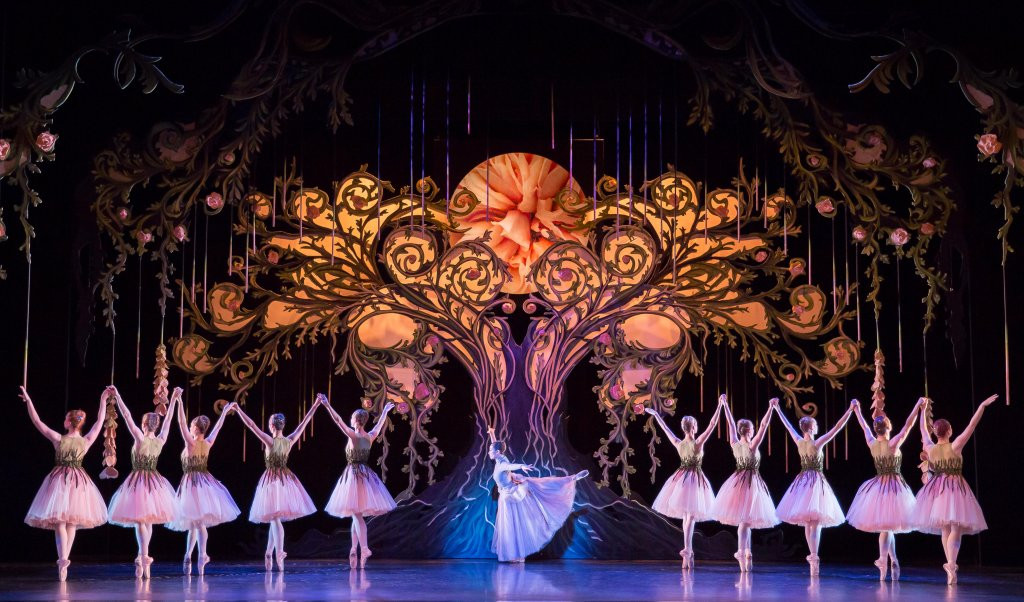 Scottish Ballet dancers performing on a professional sprung Harlequin Cascade vinyl dance floor.
Scottish Ballet dancers performing on a professional sprung Harlequin Cascade vinyl dance floor.
Ballroom
Ballroom dance, a captivating partner dance tradition, emerged in France in the late sixteenth century. While often used as a general term for partner dancing, ballroom has evolved into two primary categories: Standard/Smooth and Latin/Rhythm.
The Standard/Smooth category encompasses dances like the Waltz, with its elegant and flowing movements; the Tango, known for its passionate and sharp steps; and the Foxtrot, characterized by its smooth and gliding rhythm. Latin/Rhythm dances include the Pasodoble, a dramatic and Spanish-inspired dance; the Bolero, a slow and romantic Cuban dance; and the Samba, a lively and energetic Brazilian dance.
Ballroom dance is a popular competitive dance form, often referred to as dancesport. Competitions are held globally, showcasing the skill, artistry, and precision of ballroom dancers. Beyond competition, ballroom dancing is enjoyed socially and recreationally by people of all ages.
The diverse styles within ballroom demand a versatile dance floor. Harlequin Fiesta and the specialized Harlequin Liberty Ballroom dance floor are designed to meet the demands of all ballroom styles, offering the right surface for both practice and performance.
Harlequin Liberty Ballroom is the trusted choice for prestigious events and organizations, including the BBC’s ‘Strictly Come Dancing’ and Professional World Ballroom Dance Champion, Christopher Hawkins.
 Dancers performing ballroom for charity on a Harlequin Liberty Ballroom sprung dance floor.
Dancers performing ballroom for charity on a Harlequin Liberty Ballroom sprung dance floor.
Contemporary
Contemporary dance, a dynamic and expressive genre, developed in the mid-twentieth century and has since become a prominent and technically demanding dance form. It is widely studied and performed professionally, particularly in the US and Europe.
Drawing inspiration from classical ballet, modern dance, and jazz dance, contemporary dance has evolved into a fluid style that incorporates elements from various dance forms. It emphasizes versatility and innovation, encouraging dancers to explore a wide range of movements.
Contemporary dance is characterized by its focus on a strong core and articulate legwork, the use of contract and release techniques, incorporating fall and recovery principles, and extensive floor work. Performances often feature unpredictable shifts in tempo and rhythm, adding to the genre’s expressive and dynamic nature.
The physicality of contemporary dance necessitates a shock-absorbing floor to protect dancers from the impact of rapid movements and changes in rhythm. Harlequin’s innovative ‘triple sandwich’ Harlequin Activity sprung floor, when combined with various vinyl dance floors, creates an ideal surface for contemporary dance, providing both safety and performance enhancement.
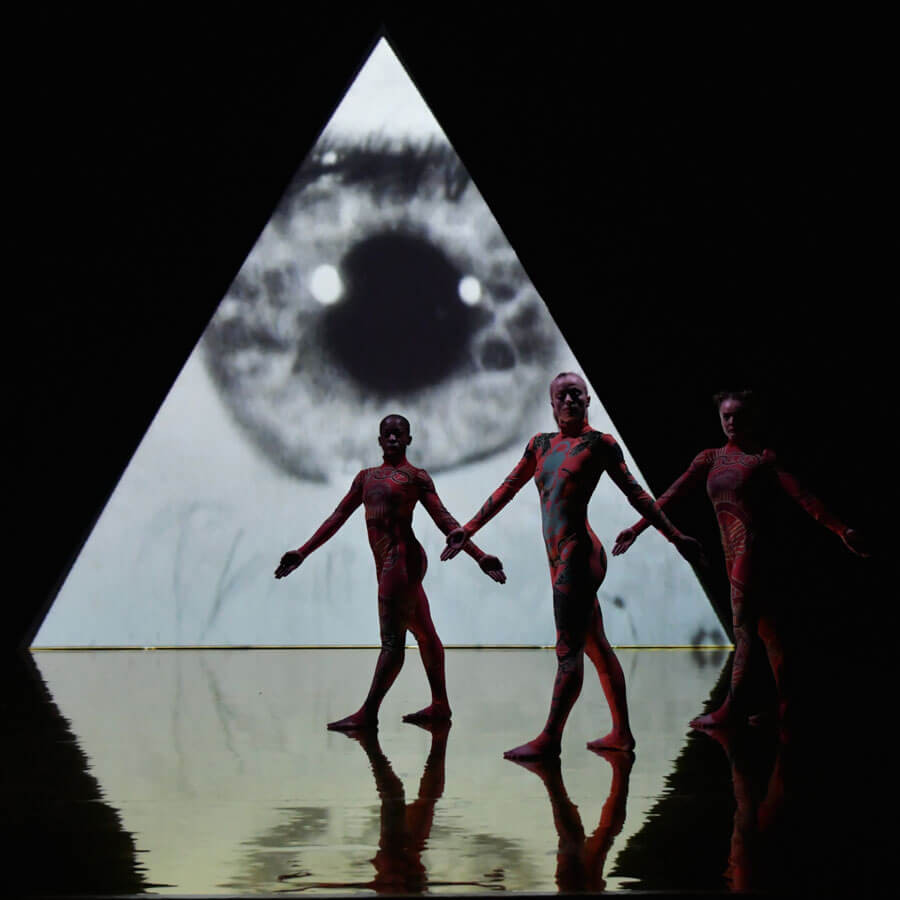 A contemporary dancer in motion on a Harlequin Hi-Shine vinyl dance floor.
A contemporary dancer in motion on a Harlequin Hi-Shine vinyl dance floor.
Hip-Hop
Hip-hop dance encompasses a diverse range of street dance styles that emerged alongside hip-hop music and culture. Originating in the early 1970s in New York and California, hip-hop dance evolved from Funk and the development of breakbeat music.
Key styles within hip-hop dance include Breaking (breakdancing), known for its acrobatic and dynamic movements; Locking, characterized by its sharp stops and freezes; and Popping, which involves creating illusions of popping and locking muscles. Derivative styles such as Memphis Jookin’, Turfing, Jerkin’, and Krumping have also emerged, often gaining mainstream popularity through music videos and media.
Today, hip-hop dance is practiced and performed in various settings, from outdoor spaces and dance studios to competitive arenas. Its improvisational nature distinguishes it from many other competitive dance styles, with dance crews frequently engaging in energetic dance battles.
For hip-hop and street dance styles, Harlequin Floors has developed Harlequin Freestyle, a specialized dance floor designed to meet the unique demands of these energetic and dynamic genres. It provides the right level of grip and durability for intricate footwork and dynamic movements.
 Hip-hop dance crew performing on Harlequin FreeStyle dance floor.
Hip-hop dance crew performing on Harlequin FreeStyle dance floor.
Jazz
Jazz dance has deep roots in seventeenth-century African traditions, brought to the Americas during the Atlantic slave trade. Enslaved Africans continued their dance traditions in Brazil, the US, and other parts of the Americas, laying the foundation for jazz dance.
Characterized by its improvisational and expressive movements, jazz dance gained popularity in early twentieth-century jazz clubs alongside the rise of jazz music. It emphasizes rhythm, syncopation, and individual expression.
Today, jazz dance builds upon African American vernacular dance styles that emerged with jazz music in the US. Popular jazz dance styles include Swing, the Lindy Hop, the Shimmy, and the Charleston, each with its own unique flair and historical context.
For jazz dancers, Harlequin Floors offers a range of vinyl floors, including Harlequin Studio and Harlequin Allegro. These floors provide ideal surfaces for both jazz dance practice and performance, offering a balance of grip and slip for dynamic movements.
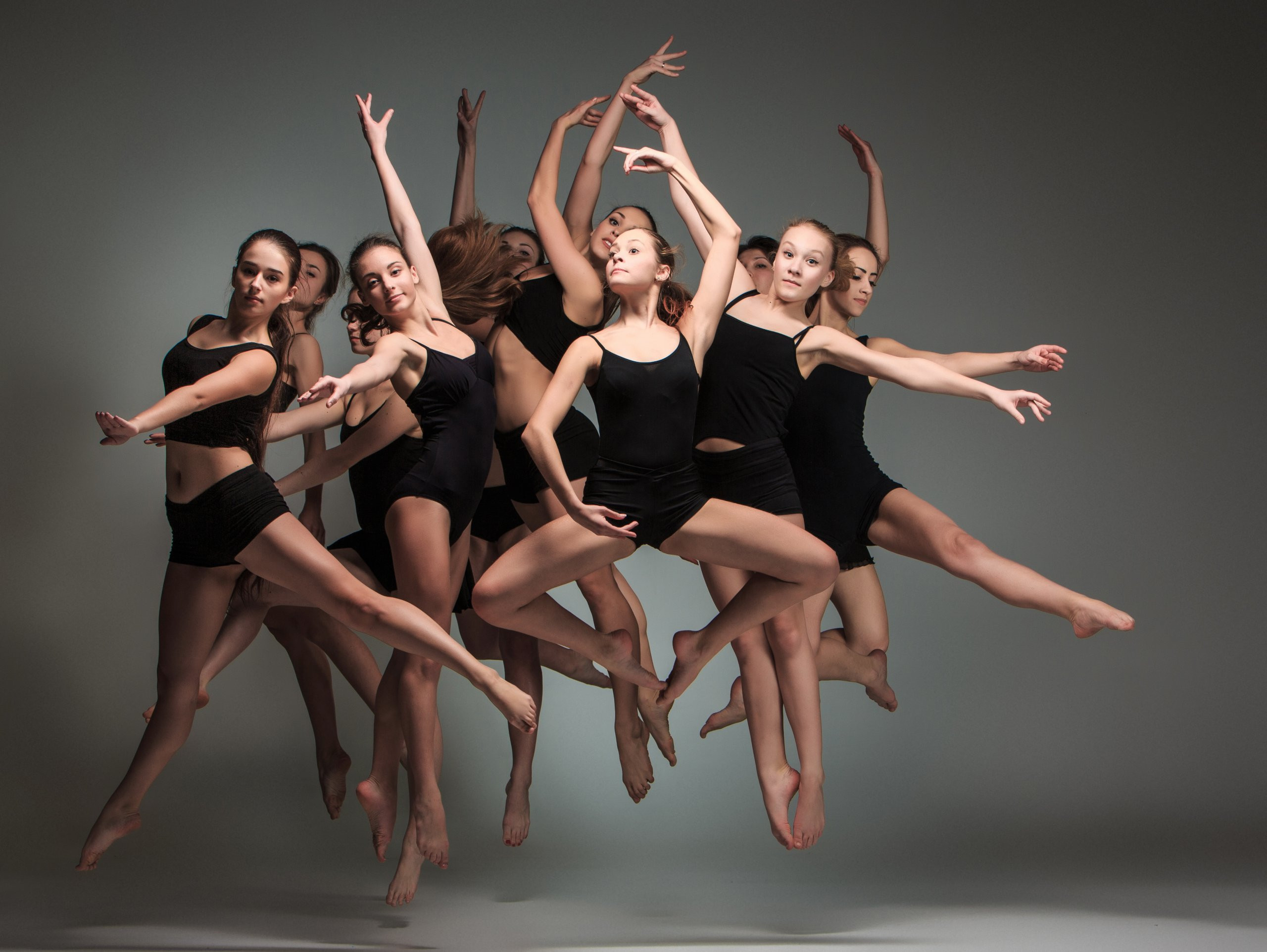 Jazz dancers leaping in the air on a dance floor.
Jazz dancers leaping in the air on a dance floor.
Tap Dance
Tap dance is a percussive dance form distinguished by the rhythmic sounds created by tap shoes striking the floor. Tap dancers often wear metal ‘taps’ on the heels and toes of their shoes to amplify these sounds, turning their feet into rhythmic instruments.
Often featured in musical theatre productions, tap dance frequently emphasizes choreography and formations, with multiple tap dancers performing in unison to create complex rhythmic patterns.
Tap dance encompasses a range of styles, including flamenco tap, rhythm tap focusing on musicality, classical tap, Broadway tap emphasizing theatricality, and postmodern tap pushing the boundaries of the form.
The percussive nature of tap dance requires a specialized floor that enhances sound clarity and resonance. Harlequin Fiesta is an excellent tap dance flooring choice for dance studios and performance spaces. When layered over a sprung flooring system like Harlequin Liberty, it provides both optimal sound and joint protection for dancers, allowing them to perform with confidence and precision.
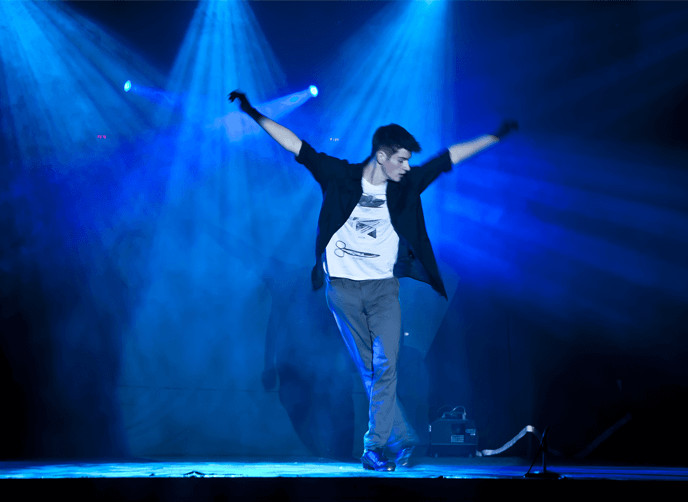 Tap dancers performing in unison on a Harlequin Cascade dance floor.
Tap dancers performing in unison on a Harlequin Cascade dance floor.
Folk Dance
Folk dance, a vibrant expression of culture and tradition, is celebrated globally. Diverse cultures and communities utilize various forms of folk dance to convey emotions, narrate stories, commemorate historical events, and depict aspects of daily life.
Well-known examples of folk dance include Bharatanatyam from India, a classical dance form rich in storytelling; Samba from Brazil, a lively and rhythmic Carnival dance; and Hula from Hawaii, a graceful dance accompanied by chants and storytelling. Many cultures boast multiple folk dance variations, with countries like South Korea having distinct dances for significant events such as war victories, farming rituals, music celebrations, and religious ceremonies.
Folk dances are commonly performed at public gatherings and events, welcoming participation from individuals of all skill levels, from seasoned professionals to complete beginners. Traditional music often accompanies these dances, enriching the cultural experience and fostering community engagement.
Harlequin Floors’ range of portable performance floors and dance floor hire services are ideal for folk dance events held in diverse public venues and settings. These portable options provide a safe and suitable dance surface for community celebrations and cultural performances.
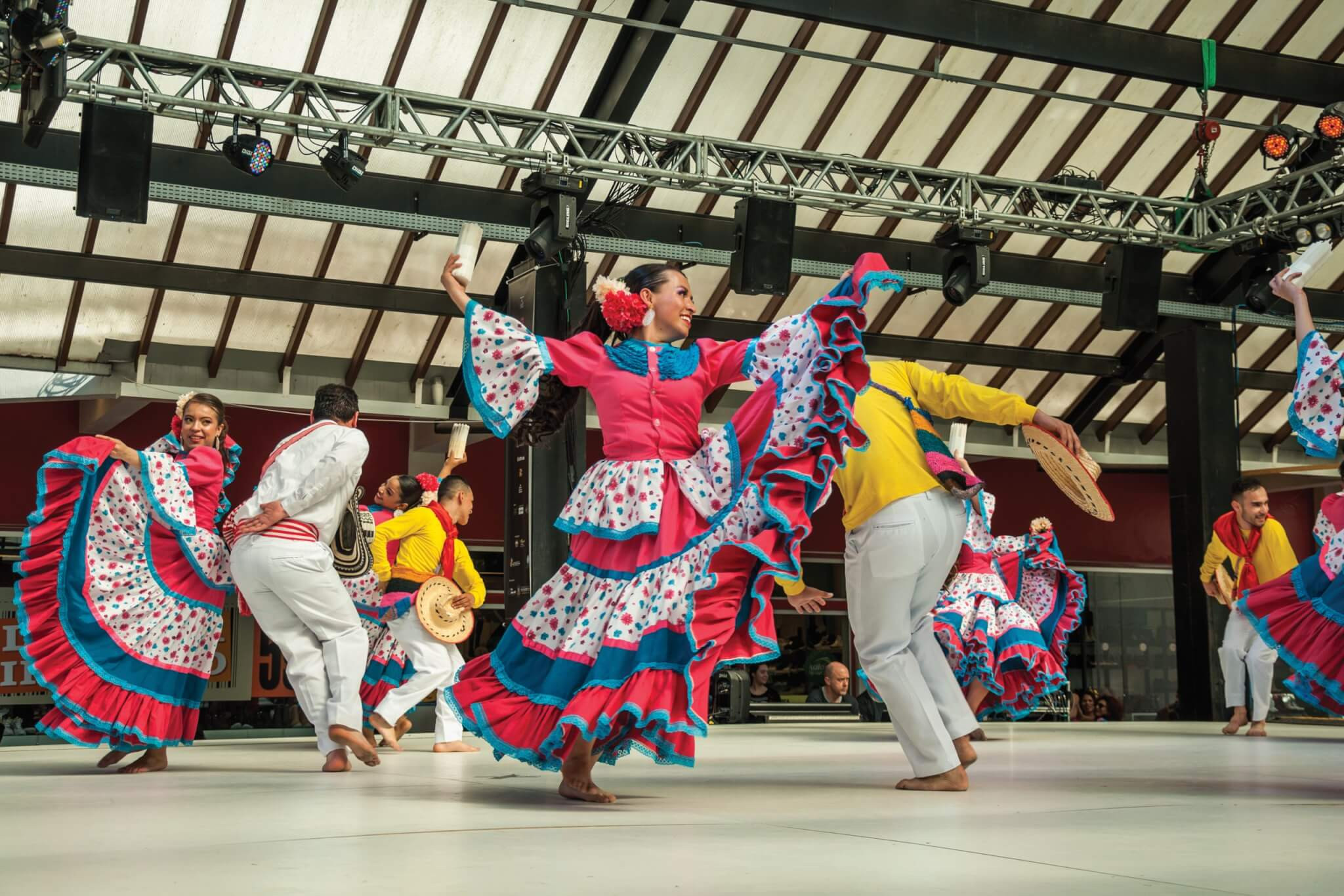 People participating in a folk dance performance outdoors.
People participating in a folk dance performance outdoors.
Irish Dance
Irish dance, originating in Ireland, is a traditional dance form with a rich history spanning hundreds of years. It has gained global popularity, captivating audiences worldwide with its intricate footwork and dynamic formations, largely popularized by shows like Riverdance.
Irish dance events are traditionally accompanied by music and sometimes singing. Festivals and competitions showcase talent, with dancers competing for trophies and medals.
While often recognized for group performances, Irish dance also includes notable solo forms, such as stepdance, emphasizing intricate footwork and individual artistry.
For Irish dance floors in studios or performance spaces, Harlequin Floors offers specialized sprung dance floors. Paired with a Harlequin vinyl floor like Harlequin Standfast, these floors provide a high-quality surface for Irish dancers, ensuring both performance and safety.
 Riverdance dance troupe performing on a Harlequin Cascade dance floor.
Riverdance dance troupe performing on a Harlequin Cascade dance floor.
Modern Dance
Modern dance, a broad and influential genre, emerged primarily in Western countries like the USA and Germany during the late 19th and early 20th centuries. In contrast to structured dance forms with set steps, modern dance prioritizes a dancer’s interpretation of music and emotions to guide movement.
Modern dance arose initially as a rebellion against the perceived limitations of traditional dance forms like ballet, which were seen by some as overly restrictive with rigid rules and techniques. Pioneers of modern dance sought greater freedom of expression and movement.
Currently, modern dance is enjoyed globally, offering dancers the freedom to explore movement without strict adherence to traditional techniques or turnout. Dancers can select music and utilize unconventional movements to express emotions or convey meaningful narratives.
To enhance the creative possibilities of modern dance, Harlequin Floors offers printed vinyl performance floors. These floors allow for bespoke designs inspired by choreography or the selection of standard patterns, adding a visual dimension to performances.
The versatile and free-flowing nature of modern dance means dancers can comfortably practice and perform on many of Harlequin’s vinyl dance floors, finding surfaces that support their diverse movement vocabulary.
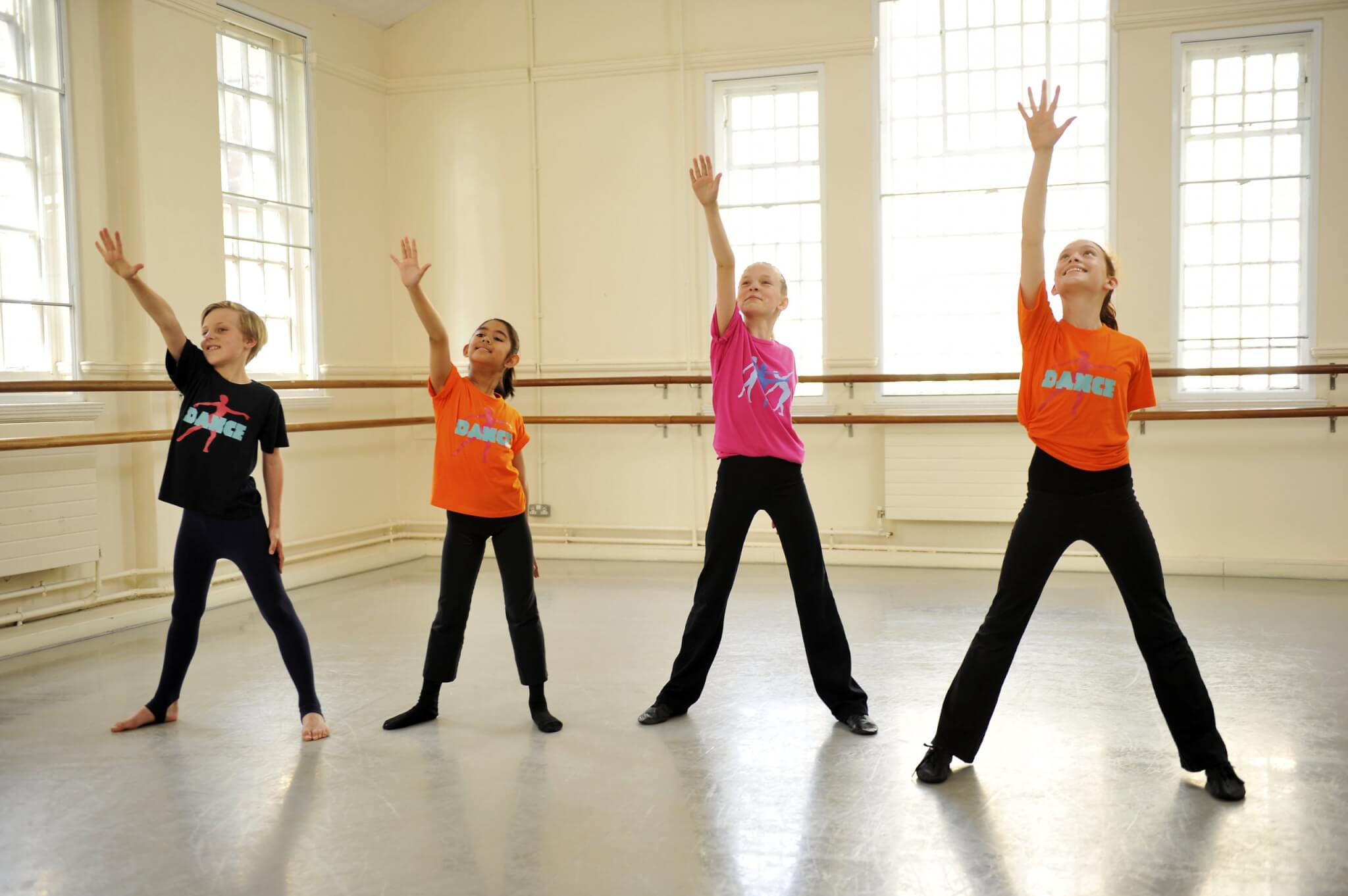 Dancers from the Royal Academy of Dance performing on Harlequin Cascade dance floor.
Dancers from the Royal Academy of Dance performing on Harlequin Cascade dance floor.
Swing
Swing dance, a lively and social jazz dance variation, developed between the 1920s and 1940s in response to the growing popularity of swing jazz music in America. The evolution of music during the Jazz Age spurred changes in dance, with swing music encouraging faster, more energetic movements.
Popular forms of swing dance include the Lindy Hop, known for its партнер work and improvisational style; the Charleston, with its fast-paced kicks and syncopated rhythms; the Jitterbug, a high-energy and acrobatic swing style; and Balboa, characterized by its close embrace and intricate footwork. Many of these styles remain popular today. Swing dancing was typically accompanied by Big Band musicians playing upbeat, smooth, and danceable melodies.
Swing dancers will find a comfortable and supportive surface on Harlequin’s range of vinyl dance floors. Similar to jazz dance, swing performances thrive on surfaces like Harlequin Reversible Pro, which offers a high-performance, slip-resistant surface to ensure dancer safety and confidence.
From home dance practice equipment to portable ballet barres, Harlequin Floors provides a comprehensive range of professional products suitable for home and studio use, catering to every dance style. Our expert technical teams also offer a professional dance floor installation service to ensure your Harlequin floor is installed correctly and meets all safety standards.
Contact us online for further information and expert advice.

